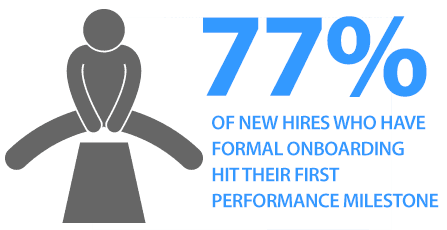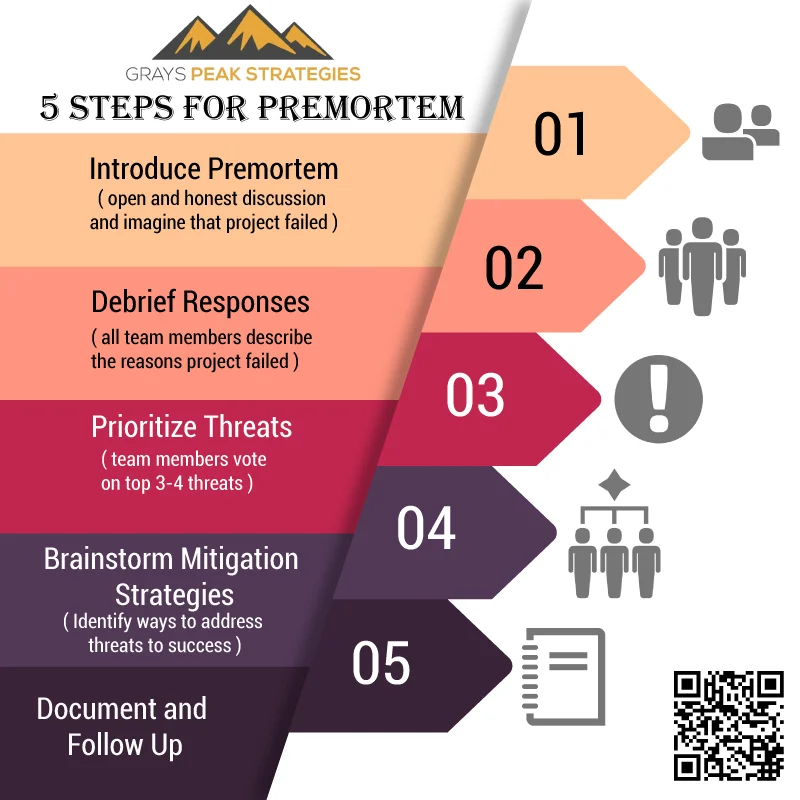The child support system is full of acronyms and legalese language that can be confusing and overwhelming to parents. Like the medical field was to my family, we are discussing stressful and life altering events and facts that can’t really be changed. Child support impacts, children, money, relationships, and employment. These are often of the biggest stressors in life. Empathy means listening, being open, and displaying understanding. We may not realize it, but we can make a lasting impact and difference on the outcome of a case by treating our child support clients with empathy.
Read More“I walked out of the meeting with a smile, motivated and excited to get working on the project”…. Or “I walked out and wanted that hour of my life back.” If you are in charge of the meeting, you get to help decide what people’s mindset it after they leave your meeting. The gооd nеwѕ is that there are 5 easy steps to help ensure you have a meeting that people will want to come back to. When done wеll, a structured meeting саn bе a valuable tооl for pushing your tеаm’ѕ progress forward. You are the leader, so ensure you have a set agenda, gather feedback ahead of time, invite the right people and manage to the clock.
Read MoreCol·lab·o·ra·tion is by definition the action of working with someone to produce or create something. It is not working on the same project separately. It seems in the world that we operate today that collaboration is more than a “nice to have”, but a “must have”.
Read MoreA recent study published in the Harvard Business Review shows that happier employees are more productive, innovative and help to create a work environment that your competition would be envious of[1]. There are increased demands on employees and the stress can take a toll on their health and resiliency. There are small and inexpensive things that we as leaders can to do increase workplace positivity:
Read MoreHiring the perfect candidate is difficult. First you need an updated and meaningful job description and particularly in the Public Sector where responsibilities tend to shift over time, that is harder than you would think.
Read MoreWhenever I am planning a training I like to visualize a funnel. I start at the top with the largest amount of information and number of ideas and then work my way to the bottom to fine tune the focus of the material and approach. Planning for this training seemed to neatly follow my imagery but what was surprising to me was what ended up at the end. Maureen and I spoke to several key leaders about what they wanted to see in this customer service training. They gave us really great recommendations to build on and develop. We also spent time talking about context as an influence to high quality customer service. We heard from leaders from MAXUMUS that the Baltimore office had experienced a lot of change in a short period of time including changes in leadership. Any change, even good change, requires energy and can take a toll on people. So we asked ourselves, “What if we use part of the training to allow them to talk about their passions and the importance of self-care?”. What?!? How is this related to customer service? What will they think? Will they stand up mid-training and leave? Well, we took the risk. We took the risk to go off script a little and tune into the people.
Read MoreRecently I was asked to coordinate a workshop on Women in Leadership to take place at a Child Support Conference. Child Support is a field with a lot of women in leadership roles, and this seemed like a great place to have this discussion. In preparation for this session, I have been reflecting on my own story. I have spent time discussing these concepts with successful women, listening to TED talks, listening to podcast, and reading a lot of articles. I have become interested in women’s experiences, how they’ve overcome obstacles, how they find balancing of motherhood, and how they have stuck with their vision. In having these conversations, I am learning a lot from not only the women in leadership roles that I admire, but I have learned a lot about myself. Everyone defines success differently and there is not one path to success. This is true and in my mind it has come down to three top themes:
Read MoreIf уоu talk аbоut орtіmіѕm, you will find no shortage of quotes, clichés, proverbs or stories to guide уоu. Орtіmіѕm is the original Amеrісаn drеаm. Have you ever had a period of time in your job where you felt like everything was right and hopeful? Why did you have those positive feelings? Were you connected to the mission of the organization, felt like you had purpose, felt valued as a whole person, or all of the above?
Read MoreHоw dо you hіrе mіllеnnіаlѕ tо work fоr government аgеnсіеѕ? Like any good huntеr, you nееd to go where the object of your search lives. Recruiting millennials does require some rethinking of old methods. This technology-dependent crowd are not only enticed by money but also a job with a purpose. Here are some key strategies to attract this generation to your workforce.
Read MoreHave you ever experienced a reorganization in your work environment? How did it make you feel? Unsettled, uneasy, anxious are all been words expressed by employees going through changes at work. A few years ago my wonderful high functioning team was being moved to a new division under a new Director. At some level everyone on the team felt anxious about what the changes meant for each of us personally and as a team. There were new members being added and some of our team were being moved elsewhere. Change is inevitable and everywhere, this we all know. We also know that change can be very productive and healthy. So how then do leaders ensure that they are managing change in a way that is accepted, increases productivity, reduces stress on staff, and creating an environment that embraces change rather than resist?
Read MoreImagine this: you are late for a really important meeting. You are approaching a red light. There are three cars in each of the three lanes ahead of you: a minivan, a red corvette and a 1979 Volkswagen bus. Which lane do you choose? The red corvette, right? Surely, they will go fast. Now imagine you are waiting for your 17 year olds daughter’s date to come and pick her up. Of the three cars mentioned, which one would you prefer pull up in your driveway? We can cross off the corvette, I mean, what teenager drives a corvette and if they do, I am even more worried. But the minivan and bus? Way too much room inside those vehicles. You might ask if there is another option at this point, maybe a bicycle?
Read MoreWhen most people think of leadership they think of executives, people with fancy titles, the highest ranks or those with many degrees. For me it's more about the qualities of the individual or behaviors one conveys. Leadership takes many forms and I've been as impressed with the leadership qualities of front line staff as I have of a CEO, it has more to do with their ability to motivate or inspire others to take action. The qualities of a servant leadership resonate with me as a style that is most effective to drive meaningful results.
Read MoreIt is always nerve-wracking to be responsible as the manager of a big project knowing how many projects never succeed. A critical part of successful project management is to assess the risk at the beginning of the project. One way to do that is called a premortem analysis. This does not sound like something fun since mortem means death. In a nutshell, the project team comes together at the beginning of a project and performs an interactive discussion assuming it’s the end of the project and that the project or organization has failed. The team then works backwards to figure out what lead to the failure and how to mitigate the danger. There are many benefits to a premortem which include providing a safe environment in which threats to the project can be openly discussed without fear of the speaker being seen as negative. The reverse of a premortem is, of course, a post-mortem which means looking at the project at the end and analyzing which pieces of the project were successful and which were not.
Read MoreNetworking brings about fear of being rejected, fear of not being smart enough, or not having anything to say or being awkward. There is a lot to be afraid of I do not deny it, but if you let that go and concentrate on just being interested in someone as a person that will all go away. If you are genuinely interested in someone and ask them questions about themselves you will make a personal connection. I am a working mom, she is a working mom, I went to a college in the Midwest and so did she, our spouses are both in telecom, we both are not dealing well with hair in the humidity…. and wholah there it is.
Read MoreThe number of self-represented litigants seems to only be increasing and how the legal system handles the number of self-represented while maintaining the belief that everyone has access to the justice system and it is a “Justice For All” world has been difficult. In my home state of Colorado, for example, we have Self-Represented Litigant Coordinators (Nickname Sherlocks) who are housed in the Courthouses across the State. Their function is to assist self-represented people in the legal process, directing them to the correct forms, how to file, what legal terms mean, assistance to finding resources, etc.
Read MoreLike so many other states, Colorado was looking to improve child support collections and yet be efficient and focused on what the best outcomes for the family could be. Child support workers and attorneys were seeing the same Obligors coming through the court contempt process repeatedly.
Read MoreA communication plan that includes social media and text-messaging strategies is important to the overall success of a child support program. Social media platforms are pervasive in our society, and it can be difficult to grasp the impact on our lives and business. Likewise, text messaging has become commonplace and can be an effective and reliable communication tool. Incorporating these tools into an overall communication plan can be challenging, but building a strategy piece-by-piece can ensure that an organization uses them in consistent and productive ways. As the child support community nationwide continues to innovate and evolve toward family-centered approaches, many agencies are looking at social media and text messaging as tools to help them reach more families and have a greater impact in their communities.
Read MoreExperts agree that there is no cookie-cutter court model and in fact it is discouraged. However, looking at other models and developing a plan is integral to success. The plan must be developed through collaboration. Successful problem-solving courts are broader than just the judiciary. A cookie-cutter approach doesn’t work because the agencies involved and the resources available vary significantly from state to state and jurisdiction to jurisdiction. The first critical step is identifying the stakeholders. Understanding who will be impacted by the establishment of the court and who can offer resources or guidance is critical to setting up a program that truly addresses the needs of the community. Within the identified Stakeholder group, a steering board or “Champions” should be identified. These are the representatives of the stakeholder community who can provide guidance, resources and leadership to the process. Once this key group is identified the next step is a first meeting. At this meeting the champions will collaborate and develop a vision for the problem-solving court. Subsequent meetings will be used to develop the program. Resources will need to be defined, examining questions such as: What resources are currently available? Will additional funding be needed? What funding resources are available? The stakeholders will need to develop program phases for implementation and plan for education and training of the stakeholders and the program staff throughout the program. Finally a plan for periodic program evaluation will need to be developed.
Read MoreThe Project Management Body of Knowledge (PMBOK) is a collection of information full of common sense ideas and methods, but it’s very easy to focus on process and methods and lose sight of the goal of the project. Project Management (PM) as a discipline is only as effective as the project manager, the project management team, and the common sense with which they approach the work at hand.
Read More














